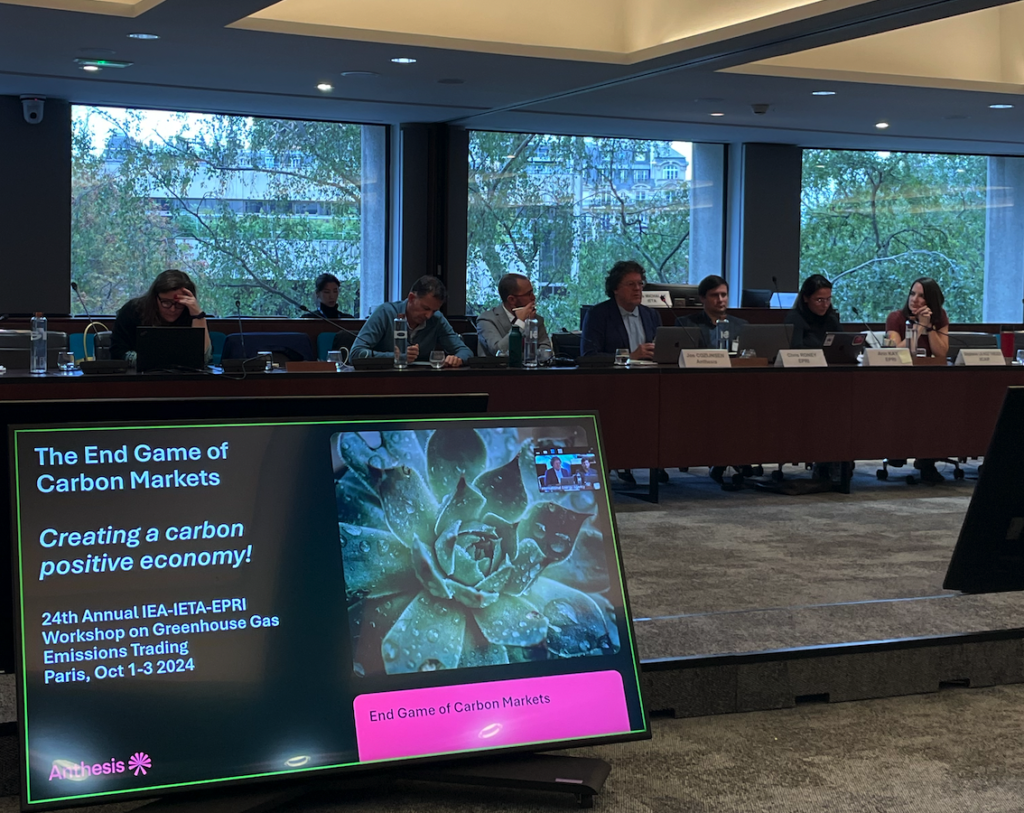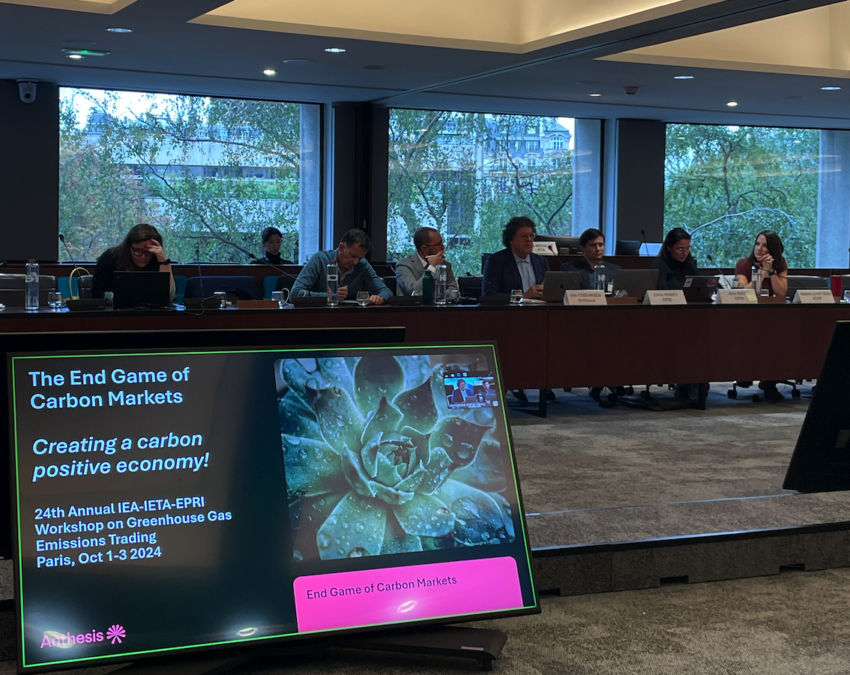Last week I joined for Anthesis the 24th annual GHG Trading Workshop by IEA-IETA-EPRI. I gave a presentation on the future of the carbon market, particularly EU #ETS after 2040. I highlighted how the EU ETS can get a #negative emissions target, gradually introducing carbon #removals from EU and global projects. Stephanie La Hoz Theuer of ICAP presented ways governments can adapt ETS designs for a net-negative future. Christina Hood presented New Zealand’s plans to link ETS with forest carbon removals.

Key discussion points of the Workshop, focussing on #CoP29:
1. Article 6.2 (Paris Agreement): Progress is expected on government-to-government trade of carbon credits, with decisions on transparency, transfer authorization, and national emissions reporting. It is required that selling countries meet own NDC targets to prevent overselling. After transfer, it needs to ‘correspondingly adjust’ the credits, hence adding emissions back to the national emissions report.
2. Article 6.4 Mechanism: Crediting mechanism to replace the Clean Development Mechanism is under discussion, focusing on project baselines, carbon methodologies, and managing reversal risks for carbon removals. Already before the CoP, the Supervisory Body of the Art 6.4. credit mechanisms, now named the “Paris Agreement Crediting Mechanism”, adopted 2 key standards: the Standard on Methodology Requirements and the Standard on activities involving removals.
3. #Demand for Carbon Credits: While CoP decisions may not immediately boost demand, countries like Japan, Norway, Singapore, Switzerland are actively purchasing Article 6 credits. UK is interested. EU is not including #ITMOs in their Climate Law yet. Carbon removal demand is expected to increase post-2050 as nations aim for net-negative emissions. On #supply, Chile, Ghana, Rwanda, Tanzania, Thailand, Vanuatu,.Zambia are active.
4. Voluntary Carbon Market: While the VCM could support corporate net-zero goals, it remains controversial. The market is still recovering from a 2021 downturn, and efforts are being made to rebuild trust through integrity frameworks, standards, and guidelines. But VCM remains in a transitional phase. While the EU is focussed on EU removal projects for the VCM, more countries may prefer cross-border trades later, when they realize domestic projects are pricy.
5. #Regulatory Carbon Market: The role of carbon credits in regulatory markets is limited but growing, with a trend toward domestic systems. EU and other countries may spur future demand for carbon credits, particularly for carbon removals. Only Singapore seems open for foreign carbon credits. The EU Climate Law, the corporate reporting framework (CSRD) and green claims regulations allow carbon removals to meet residual emissions with safeguards. The UK proposed to allow carbon removals to the UK-ETS. Participants agreed that ICAO/ICROA is the first international regulatory demand for offsets under Art 6.2. The regulatory carbon market will set eligibility criteria under ETSs that could also be applicable for the voluntary carbon market. That could spur carbon credit demand
